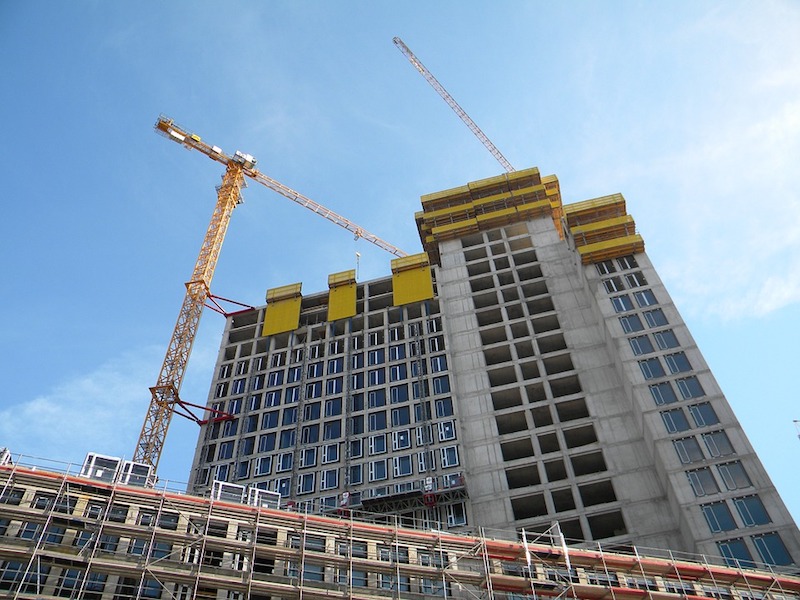Coming off a record-setting year for the nonresidential construction industry (more than $760 billion was spent on new construction and renovation work nationwide last year), AEC firm leaders should be brimming with confidence over the growth potential for their firms heading into 2019. The arrow is pointing up for nearly all building sectors, construction backlogs remain healthy, and architecture firms continue to see strong demand for their design services, according to AIA and ABC data.
Yet despite the positive indicators for the market, AEC professionals remain largely cautious when it comes to growth prospects for 2019. In October, BD+C surveyed 314 readers about their thoughts on a variety of issues: materials prices, bid prices, obstacles to growth, emerging opportunities, etc. Only slightly more than half (56.0%) of industry professionals expect higher revenue for their firm in 2018 compared to last year. More surprisingly, 13.4% are forecasting a decrease in revenue.
And their forecast for 2019 isn’t much rosier: 54.7% expect revenue to increase, 8.7% call for a drop, and 36.7% predict flat revenue this year. This is a markedly different sentiment than last year’s respondents, who were much more upbeat with their forecasts for the upcoming year: 62.0% predicted revenue to rise and only 6.1% called for it to drop.
When asked about their top concerns for 2019, the largest number of respondents cited “general economic conditions” (52.7%) as a key issue, followed by “competition from other firms” (41.0%) and “price increases in materials and services” (39.0%). In fact, nearly 90% of respondents anticipate construction materials prices to rise in 2019. That’s up from 86% in last year’s survey of BD+C readers.
See Also: And then there were two: HQ2 sites, in hindsight, seemed obvious
To help keep their project pipelines full through 2019, AEC firms are focusing on a number of business development strategies heading into this year. Selective hires (44.1%) and marketing/public relations efforts (42.2%) top the list, followed by investments in technology (39.0%), staff training/education (35.9%), and new services/business opportunities (29.2%).
Healthcare facilities and multifamily housing head the list of the hottest sectors heading into 2019, according to survey respondents. More than half (52.5%) indicated that the prospects for healthcare/hospital work were either “excellent” or “good” for 2019; 52.4% said the same for multifamily housing work. Other strong building sectors: senior/assisted living facilities (51.9%), office interiors/fitouts (46.9%), industrial/warehouse buildings (42.7%), hotel/hospitality developments (39.7%), university facilities (38.2%), government/military buildings (37.5%), and office buildings (37.4).
Related Stories
| Oct 13, 2010
HQ renovations aim for modern look
Gerner Kronick + Valcarcel Architects’ renovations to the Commonwealth Bank of Australia’s New York City headquarters will feature a reworked reception lobby with back-painted glass, silk-screened logos, and a video wall.
| Oct 13, 2010
Community center under way in NYC seeks LEED Platinum
A curving, 550-foot-long glass arcade dubbed the “Wall of Light” is the standout architectural and sustainable feature of the Battery Park City Community Center, a 60,000-sf complex located in a two-tower residential Lower Manhattan complex. Hanrahan Meyers Architects designed the glass arcade to act as a passive energy system, bringing natural light into all interior spaces.
| Oct 13, 2010
Community college plans new campus building
Construction is moving along on Hudson County Community College’s North Hudson Campus Center in Union City, N.J. The seven-story, 92,000-sf building will be the first higher education facility in the city.
| Oct 13, 2010
County building aims for the sun, shade
The 187,032-sf East County Hall of Justice in Dublin, Calif., will be oriented to take advantage of daylighting, with exterior sunshades preventing unwanted heat gain and glare. The building is targeting LEED Silver. Strong horizontal massing helps both buildings better match their low-rise and residential neighbors.
| Oct 12, 2010
Holton Career and Resource Center, Durham, N.C.
27th Annual Reconstruction Awards—Special Recognition. Early in the current decade, violence within the community of Northeast Central Durham, N.C., escalated to the point where school safety officers at Holton Junior High School feared for their own safety. The school eventually closed and the property sat vacant for five years.
| Oct 12, 2010
Guardian Building, Detroit, Mich.
27th Annual Reconstruction Awards—Special Recognition. The relocation and consolidation of hundreds of employees from seven departments of Wayne County, Mich., into the historic Guardian Building in downtown Detroit is a refreshing tale of smart government planning and clever financial management that will benefit taxpayers in the economically distressed region for years to come.
| Oct 12, 2010
Owen Hall, Michigan State University, East Lansing, Mich.
27th Annual Reconstruction Awards—Silver Award. Officials at Michigan State University’s East Lansing Campus were concerned that Owen Hall, a mid-20th-century residence facility, was no longer attracting much interest from its target audience, graduate and international students.
| Oct 12, 2010
Gartner Auditorium, Cleveland Museum of Art
27th Annual Reconstruction Awards—Silver Award. Gartner Auditorium was originally designed by Marcel Breuer and completed, in 1971, as part of his Education Wing at the Cleveland Museum of Art. Despite that lofty provenance, the Gartner was never a perfect music venue.
| Oct 12, 2010
Cell and Genome Sciences Building, Farmington, Conn.
27th Annual Reconstruction Awards—Silver Award. Administrators at the University of Connecticut Health Center in Farmington didn’t think much of the 1970s building they planned to turn into the school’s Cell and Genome Sciences Building. It’s not that the former toxicology research facility was in such terrible shape, but the 117,800-sf structure had almost no windows and its interior was dark and chopped up.
| Oct 12, 2010
The Watch Factory, Waltham, Mass.
27th Annual Reconstruction Awards — Gold Award. When the Boston Watch Company opened its factory in 1854 on the banks of the Charles River in Waltham, Mass., the area was far enough away from the dust, dirt, and grime of Boston to safely assemble delicate watch parts.

















